According to scholars, the ancient history of Vignanello is testified by traces of human settlements in the area, dating back to the prehistoric period. In Faliscan and Etruscan times, Vignanello certainly was an active urban centre, as witnessed by the Necropolis of Valle della Cupa, densely inhabited starting from the ninety century BC.
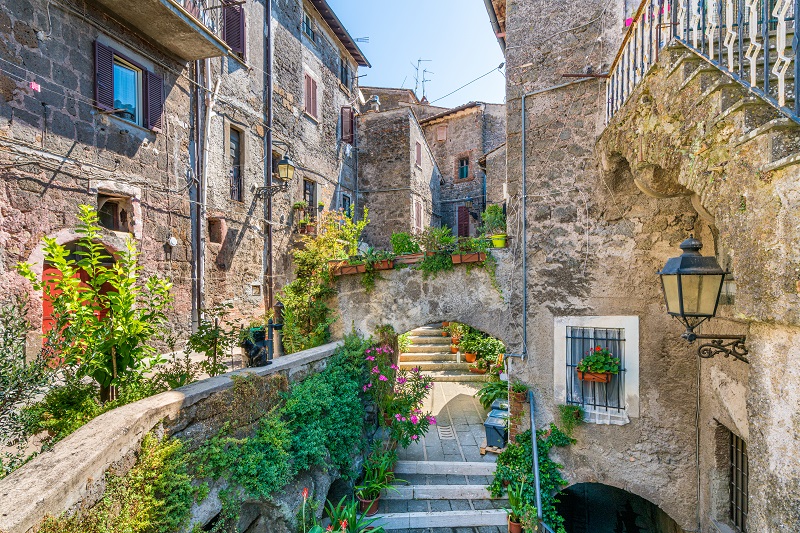
The centre of Vignanello
Walking through the charming alleys and squares of Vignanello, we will come across important buildings, such as the Castello Ruspoli from 1531.
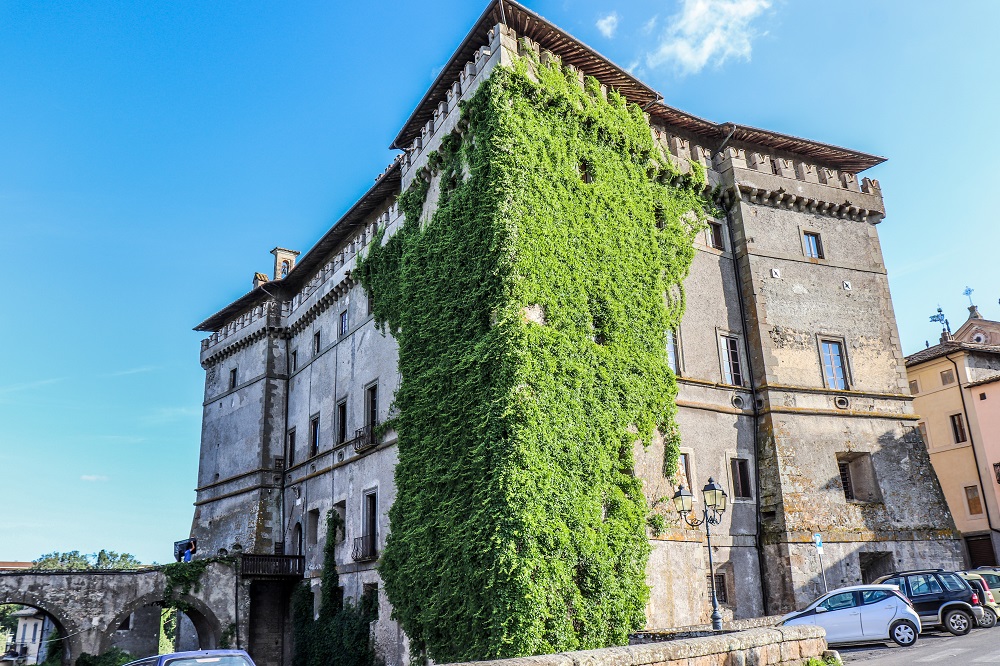
The Castello Ruspoli in Vignanello
The current structure of the Castle dates back to its reconstruction commissioned by Count Sforza Marescotti and projected by Antonio da Sangallo il Giovane between 1531 and 1538. Thus, the pre-existing medieval fortress was turned into the majestic grey-stone Castle that we see today.
Handel, the world-famous composer, spent a period at the court of Vignanello as a guest of the patron Francesco Maria Ruspoli, spending the entire summer of 1707 there.
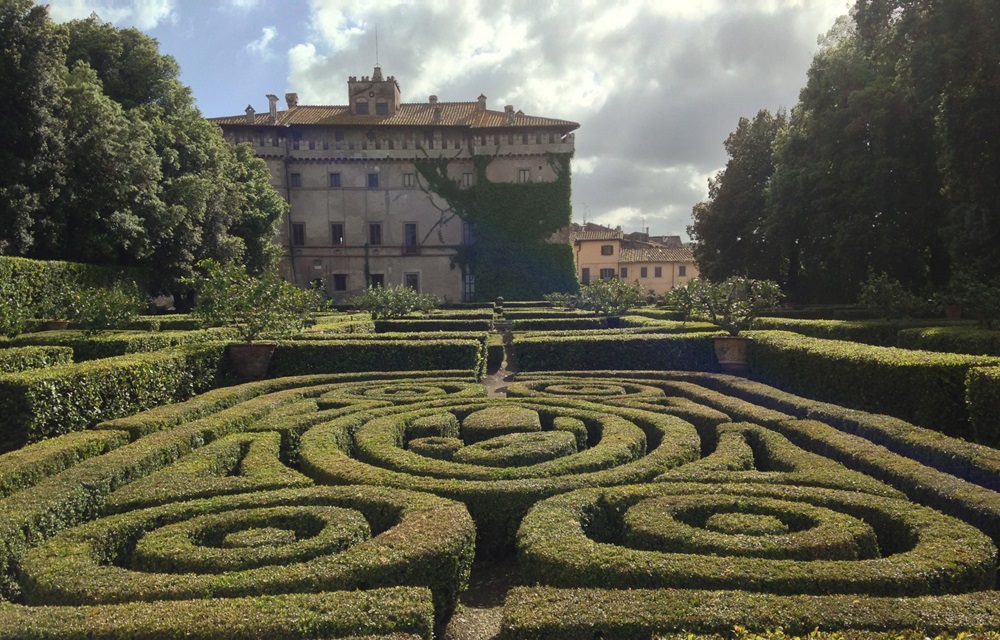
Palazzo Ruspoli e i suoi giardini – Ph @ associazionedimorestoricheitaliane.it
The Castle also includes the magnificent Garden of Ottavia Orsini, which makes it one of the most beautiful monuments in Lazio. Created in 1611 in the area behind the building, the Garden still preserves its original plan commissioned by Ottavia Orsini, daughter of Giulia Farnese and Vicino Orsini, founder of the “Parco dei Mostri” in Bomarzo. At the centre of a perfect geometric design, stands a basin with fountain surrounded by four peperino arches with balustrades.
Cappella della Madonna SS.ma dei Sette Dolori nella Collegiata di S. Maria della Presentazione – foto www.iconnutti.com
In Piazza della Repubblica, overlooked by the castle, stands the most interesting church in the village, the Collegiate Church of Santa Maria della Presentazione, consecrated by Pope Benedict XIII in 1725.
Osssario Cappella della Madonna SS.ma dei Sette Dolori nella Collegiata di S. Maria della Presentazione – ww.iconnutti.com
The basement hosts a sepulchral chapel dedicated to the Madonna SS.ma dei Sette Dolori. The shrine, dating back to the 1720s, preserves the tombs of the Ruspoli princes and common ossuaries. A “Pietà” is painted above the main altar and skulls with crossed bones decorate the entrance door, while, on the back wall, hangs the painting “Il Trionfo della Morte” by Luc’Angelo Camilli.
Vignanello boasts other interesting attractions, such as the Church of San Giovanni Decollato from 1614 and the Church of the Santissimi Angeli Custodi from 1705, located at the top of the Borgo del Molesino, where a Portal by Vignola from 1692 is to be found.
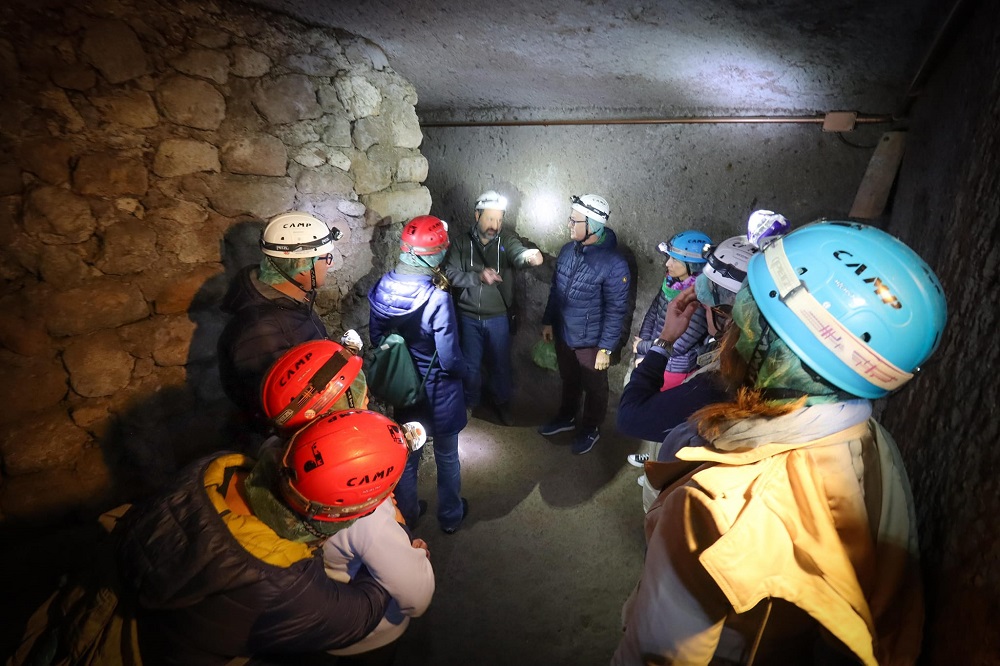
Visit to the Connutti – photo by FB Pro Loco Vignanello
The Connutti, a network of underground tunnels still visible today, were probably dug by the Faliscans for the collection of water, and expanded in the Middle Ages, maybe for defensive purposes.
You can visit the tunnels only on guided tours, equipped with a helmet and a bright torch, and walk through them from the Chapel of Maria SS. dei Sette Dolori, to the vicinity of the Castle subterranean.
Typical products and dishes to be tasted in the numerous characteristic taverns of Vignanello are the gnocchi co’ i fero with sausage sauce and pecorino, the excellent Tuscia DOP extra virgin olive oil, and the hazelnut, basic ingredient of biscuits like tozzetti or crucchi. Worth enjoying is also the Pamparito, a cake to be accompanied by cured meats, hard-boiled eggs and caciotta. The territory also boasts excellent wines, such as the Vino DOC Vignanello and its varieties.
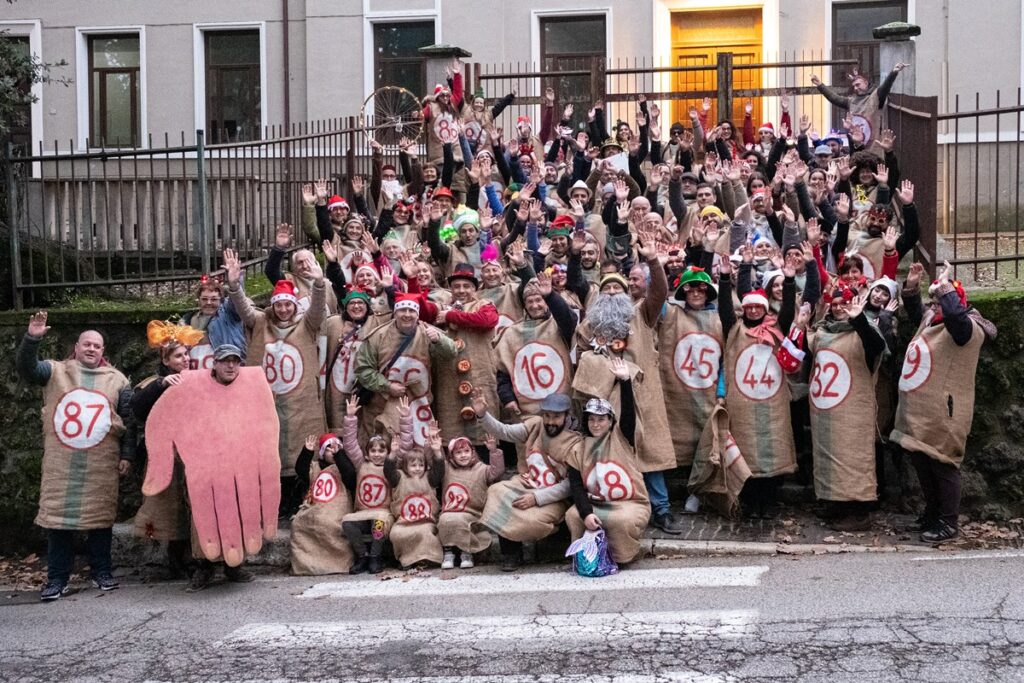
Living Christmas Bingo – tvv2010.it
Among the most important Feasts, stand out the Flower Festival of Corpus Domini, the Oil and New Wine Festival in mid-August and the Tombola Vivente Vignanellese.
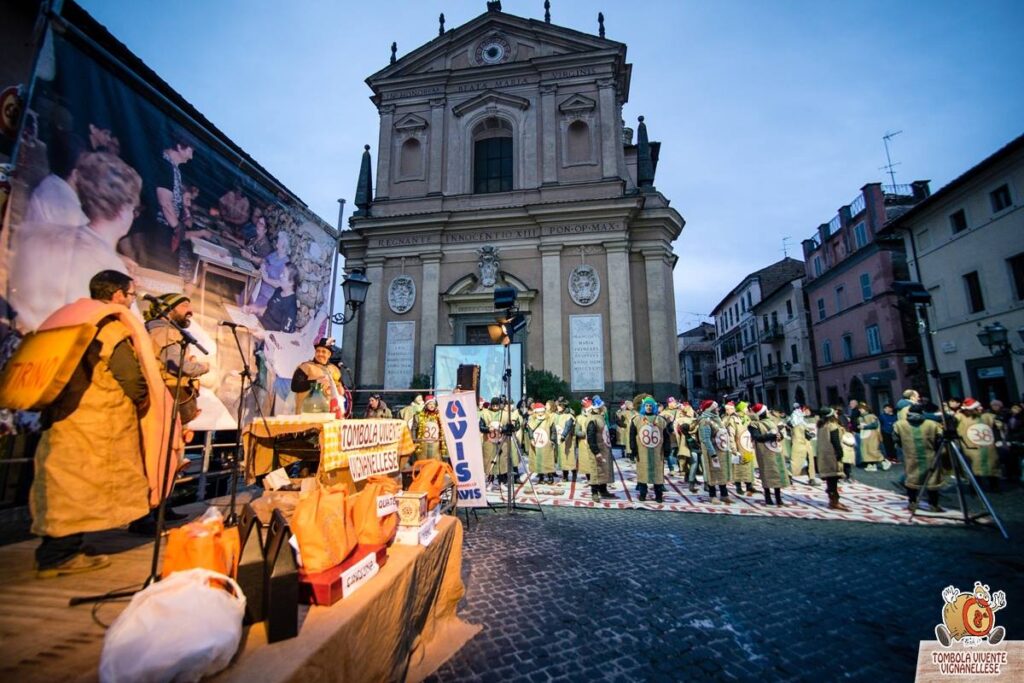
Since Christmas 2010, 26 December has literally come alive with the Tombola Vivente Vignanellese (Living Christmas Bingo), an exhilarating blend of fun, tradition and language staged in the square by the Numeri Viventi. On a 10×10 metre Cartellone (billboard), laid out in Piazza della Repubblica, 90 participants, 90 residents of Vignanello and others, move around, interpreting the Tombola numbers in a crazy way.
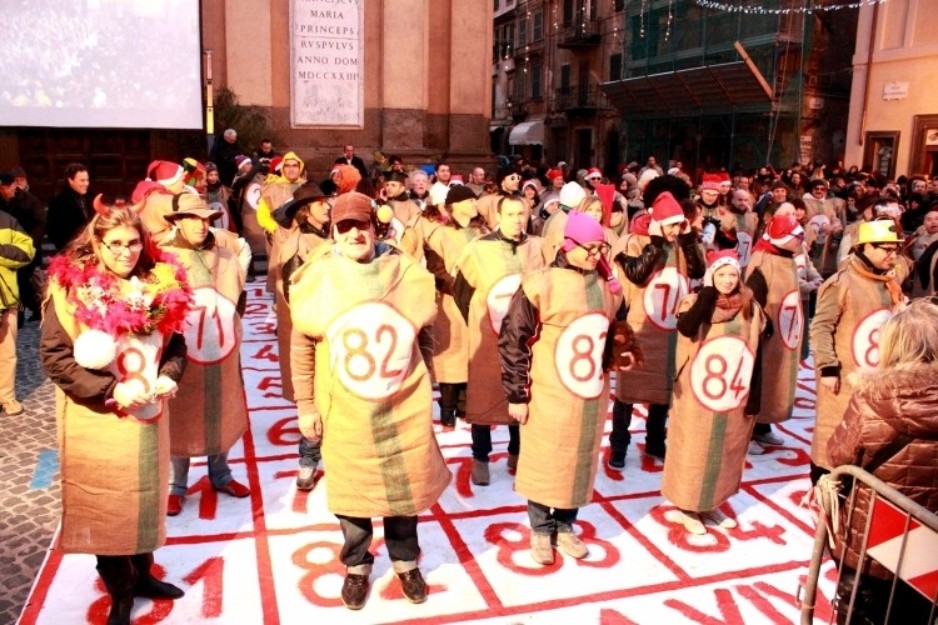
Tombola Vivente Vignanellese – prolocovignanello.org
Each Living Number wears the ‘balla’, the jute sack traditionally used for harvesting hazelnuts, on which the number is drawn. The 90 Living Numbers parade through the streets of Vignanello until they ‘slip’ into the Sacchetta, an alley that leads to the square with the Cartellone.
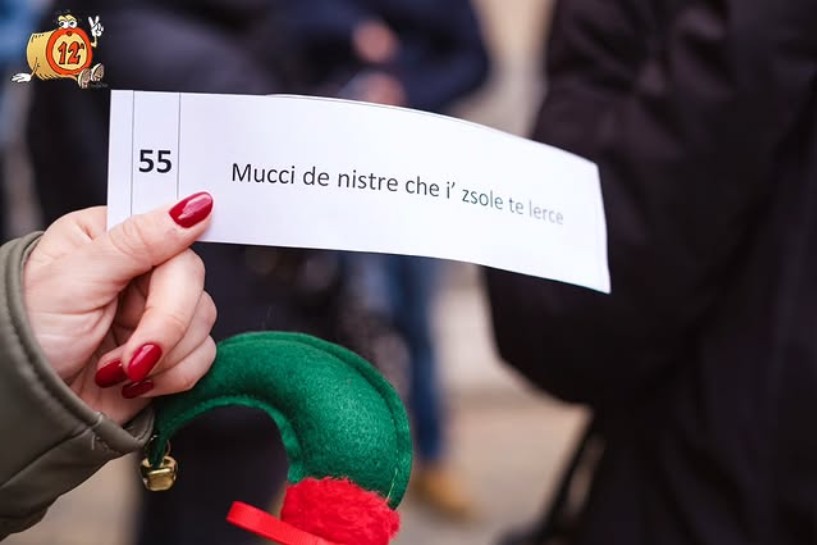
Tombola Vivente Vignanellese – Instagram @tombolaviventevignanellese
A living Hand “enters” the Sacchetta and “extracts” the Number, accompanying it onto the stage. And here comes the best part: the Number recites a Popular Saying in the Vignanellese dialect, which is then translated and explained to convey its full meaning. Since 2010, over 400 sayings from the linguistic and popular tradition of Vignanello have been rediscovered. The Spione and the Picino, traditional figures who wander around to distract and entertain the audience, are a must.
